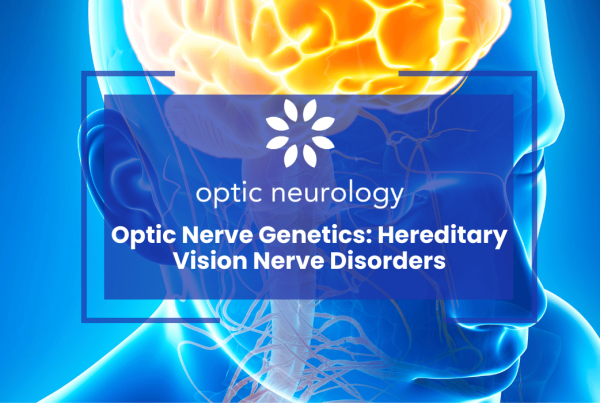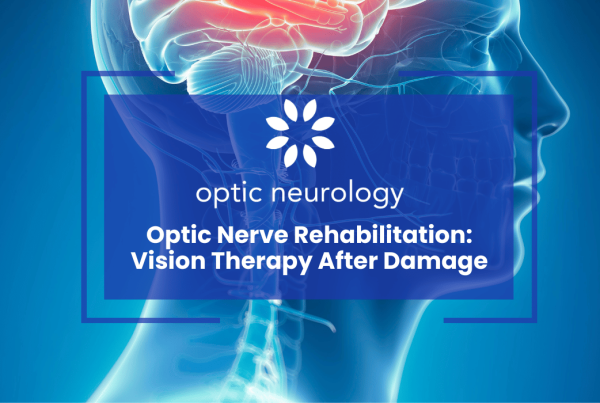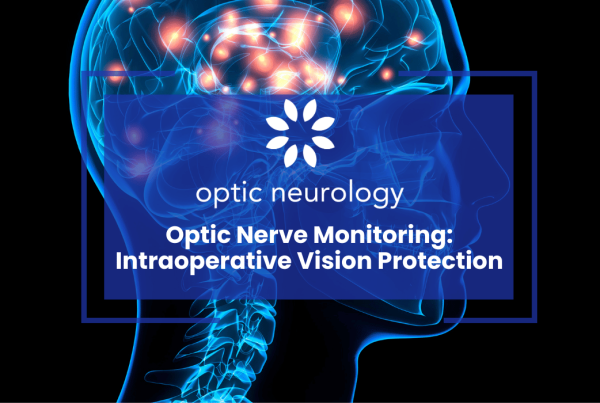Essential Insights: Protecting Your Vision from Pituitary Tumors
Pituitary adenomas can significantly impact vision when they grow large enough to compress the optic chiasm, with bitemporal hemianopia (loss of peripheral vision in both temporal fields) being the classic symptom. While microadenomas (under 10mm) rarely affect vision, macroadenomas frequently cause visual disturbances that develop gradually and may go unnoticed. Early diagnosis through visual field testing and MRI imaging is crucial, as vision recovery depends largely on how quickly treatment occurs after symptoms begin. Most patients experience significant visual improvement after successful treatment, with recovery continuing for up to 12 months. Sudden, severe headache with rapid vision loss may indicate pituitary apoplexy—a medical emergency requiring immediate medical attention. Regular neuro-ophthalmological assessment is essential for anyone with known pituitary tumors or unexplained peripheral vision changes.
Table of Contents
- Understanding Pituitary Adenomas and Visual Pathways
- Common Vision Problems Caused by Pituitary Tumors
- Bitemporal Hemianopia: The Hallmark Visual Field Defect
- How Size Matters: Macroadenomas vs. Microadenomas
- Diagnosing Vision Loss from Chiasmal Compression
- Can Vision Recover After Pituitary Tumor Treatment?
- Emergency Situations: Pituitary Apoplexy and Sudden Vision Loss
- When to Seek Neuro-Ophthalmological Assessment
Understanding Pituitary Adenomas and Visual Pathways
Pituitary adenomas are benign tumours that develop in the pituitary gland, a small pea-sized structure located at the base of the brain behind the bridge of the nose. Despite their benign nature, these tumours can cause significant visual disturbances due to their strategic location near critical visual pathways. The pituitary gland sits in a bony cavity called the sella turcica, directly beneath the optic chiasm—the crucial crossroads where the optic nerves from each eye meet and partially cross.
When pituitary adenomas grow upward from the sella, they can compress the optic chiasm, disrupting the transmission of visual information from the eyes to the brain. This compression affects specific nerve fibres that carry visual information from the inner (nasal) half of each retina, which cross at the chiasm to the opposite side of the brain. The anatomical relationship between the pituitary gland and the visual system explains why vision problems are often the first noticeable symptom of pituitary adenomas.
Understanding this anatomical relationship is essential for both diagnosis and treatment planning. Pituitary adenoma vision problems develop gradually in most cases, as the tumour slowly expands and exerts increasing pressure on the optic chiasm. However, the pattern and progression of visual symptoms depend on several factors, including the size, growth rate, and exact position of the tumour relative to the visual pathways.
Common Vision Problems Caused by Pituitary Tumors
Pituitary tumours can cause a spectrum of visual disturbances, ranging from subtle changes that patients may not initially notice to profound vision loss. The most common vision problems associated with pituitary adenomas include:
Peripheral Vision Loss: Often the earliest and most characteristic visual symptom, patients typically experience a gradual loss of peripheral vision, particularly in the temporal (outer) fields of both eyes. This pattern occurs because the crossing fibres from the nasal retina of each eye, which carry information from the temporal visual fields, are most vulnerable to compression at the optic chiasm.
Decreased Visual Acuity: As compression continues, central vision may become affected, resulting in blurred vision or reduced visual sharpness. This symptom often develops later than peripheral vision changes but can significantly impact daily activities like reading or driving.
Colour Vision Deficits: Patients may experience diminished colour perception, particularly for red objects, which can be an early indicator of optic nerve compression.
Double Vision (Diplopia): Though less common than field defects, some pituitary tumours can extend laterally to affect the cranial nerves controlling eye movement (oculomotor, trochlear, or abducens nerves), resulting in misalignment of the eyes and double vision.
Visual Processing Difficulties: Some patients report trouble with depth perception, difficulty judging distances, or problems with visual processing that affect daily activities like driving or navigating stairs.
These vision problems from pituitary tumours often develop insidiously, with many patients adapting to gradual changes without realising the extent of their vision loss until it becomes advanced. This underscores the importance of comprehensive visual field testing when pituitary adenomas are suspected.
Bitemporal Hemianopia: The Hallmark Visual Field Defect
Bitemporal hemianopia represents the classic and most distinctive visual field defect associated with pituitary adenomas. This pattern of vision loss occurs when a pituitary tumour compresses the central portion of the optic chiasm, affecting the crossing nerve fibres that carry visual information from the nasal (inner) portions of each retina. Since these fibres transmit information from the temporal (outer) visual fields, compression results in loss of peripheral vision on both sides.
In a complete bitemporal hemianopia, patients lose vision in the temporal half of each visual field, creating a characteristic “tunnel vision” effect. However, the development of this visual field defect typically follows a predictable progression:
Early Stage: Initially, patients may experience subtle defects in the upper temporal quadrants of their visual fields. This occurs because the inferior portion of the chiasm, which carries information from the upper visual fields, is often compressed first due to the typical upward growth pattern of pituitary adenomas.
Progressive Stage: As compression increases, the defect extends to involve the entire temporal half of each visual field, resulting in the classic bitemporal hemianopia pattern.
Advanced Stage: In severe cases, the defect may progress beyond the vertical midline to affect portions of the nasal visual fields as well, significantly restricting the patient’s overall visual function.
Many patients with bitemporal hemianopia describe difficulty seeing objects approaching from the sides or bumping into doorframes and furniture. Some report challenges with reading, as the visual field defect can make it difficult to track across lines of text. Importantly, because central vision is often preserved until late stages, patients may maintain good visual acuity on standard eye charts despite significant visual field loss, highlighting the importance of comprehensive visual field testing in diagnosis.
How Size Matters: Macroadenomas vs. Microadenomas
The size of a pituitary adenoma significantly influences its potential impact on vision. Pituitary tumours are classified into two main categories based on their diameter: microadenomas (less than 10mm) and macroadenomas (10mm or larger). This distinction is crucial when considering visual symptoms and prognosis.
Microadenomas and Vision: Pituitary microadenomas rarely cause visual disturbances because their small size typically doesn’t allow them to reach and compress the optic chiasm. These smaller tumours are often discovered incidentally during brain imaging for unrelated conditions or are identified due to hormonal symptoms rather than visual complaints. The distance between the pituitary gland and the optic chiasm usually provides sufficient buffer space to accommodate microadenomas without visual pathway compression.
Macroadenomas and Vision: Pituitary macroadenoma vision problems are significantly more common. These larger tumours can extend upward from the sella turcica to compress the optic chiasm, leading to the characteristic visual field defects. The severity of visual symptoms generally correlates with the degree of chiasmal compression, which depends on both the size and the growth direction of the macroadenoma. Tumours that grow symmetrically upward are most likely to cause the classic bitemporal hemianopia, while those with asymmetric growth patterns may produce more variable visual field defects.
The growth rate of pituitary adenomas also influences visual outcomes. Slowly growing tumours allow the visual system to partially adapt to gradual compression, sometimes resulting in less severe visual symptoms than might be expected based on imaging. Conversely, rapidly growing tumours or sudden expansion (as in pituitary apoplexy) can cause more profound visual deficits due to acute compression of the visual pathways.
Regular monitoring of tumour size through MRI imaging is essential for patients with known pituitary adenomas, particularly for those with macroadenomas approaching the optic chiasm. This surveillance, combined with periodic visual field testing, helps clinicians determine the optimal timing for intervention before irreversible visual loss occurs.
Diagnosing Vision Loss from Chiasmal Compression
Accurate diagnosis of vision loss from chiasmal compression requires a comprehensive neuro-ophthalmic assessment combining clinical examination with specialised testing. The diagnostic process typically begins when patients report visual symptoms or when a pituitary tumour is discovered through imaging for other reasons.
Visual Field Testing: Automated perimetry represents the gold standard for detecting and monitoring visual field defects caused by pituitary adenomas. This computerised test maps the entire visual field, precisely quantifying the pattern and extent of vision loss. The characteristic bitemporal field defect appears as mirror-image loss in the temporal fields of both eyes. Serial visual field tests are invaluable for tracking progression or improvement over time.
Optical Coherence Tomography (OCT): This non-invasive imaging technology measures the thickness of the retinal nerve fibre layer, which can reveal optic nerve damage from chronic chiasmal compression even before patients notice visual symptoms. OCT findings often correlate with the severity and duration of compression, providing valuable prognostic information.
Magnetic Resonance Imaging (MRI): High-resolution MRI with specific pituitary protocols is essential for visualising the relationship between the pituitary tumour and the optic chiasm. Coronal views are particularly important for assessing the degree of chiasmal compression. Optic chiasm compression visible on MRI, combined with corresponding visual field defects, confirms the diagnosis.
Endocrine Evaluation: Comprehensive hormonal testing complements the neuro-ophthalmic assessment, as many pituitary adenomas produce excess hormones that can cause systemic symptoms. The hormonal profile also helps classify the tumour type and guides treatment planning.
The integration of these diagnostic modalities allows for precise characterisation of vision loss from chiasmal compression. Early diagnosis is crucial, as the duration of compression correlates with the likelihood of permanent visual deficits. For patients with suspected pituitary adenomas, prompt referral for neuro-ophthalmic assessment can prevent irreversible vision loss through timely intervention.
Can Vision Recover After Pituitary Tumor Treatment?
The potential for vision recovery after pituitary tumour treatment depends on several factors, including the duration and severity of optic chiasm compression, the patient’s age, and the type of intervention. Understanding the prognosis for visual recovery helps patients develop realistic expectations following treatment.
Factors Influencing Visual Recovery:
The duration of chiasmal compression is perhaps the most critical determinant of visual outcome. Compression lasting less than 6 months generally has a better prognosis for recovery than longstanding compression. The severity of pre-treatment visual loss also influences recovery potential—patients with mild to moderate defects typically show better improvement than those with severe vision loss. Additionally, younger patients often demonstrate greater visual recovery due to higher neural plasticity.
Timeline of Visual Improvement:
Visual recovery following successful decompression of the optic chiasm typically follows a predictable pattern. Early improvement may occur within days after surgery as the immediate pressure on the visual pathways is relieved. This initial recovery represents the restoration of axonal transport and function in compressed but viable nerve fibres. A second phase of more gradual improvement may continue for 6-12 months, reflecting remyelination and neural reorganisation processes. Most studies indicate that the majority of visual recovery occurs within the first three months after treatment, with diminishing returns thereafter.
Treatment Modalities and Visual Outcomes:
Transsphenoidal surgery remains the primary treatment for pituitary adenomas causing visual symptoms, with studies showing visual improvement in 80-90% of patients. Radiation therapy, while effective for controlling tumour growth, typically produces slower visual recovery and carries a small risk of radiation-induced optic neuropathy. Medical therapy with dopamine agonists or somatostatin analogues can reduce tumour size in specific adenoma types, potentially improving vision without surgery.
Regular post-treatment visual field testing is essential for monitoring recovery and detecting any recurrence of visual compromise. While complete normalisation of visual fields occurs in approximately 40-50% of patients, many achieve significant functional improvement even with residual field defects. Patients should be counselled that visual recovery may continue for several months after treatment, emphasising the importance of patience during the recovery process.
Emergency Situations: Pituitary Apoplexy and Sudden Vision Loss
Pituitary apoplexy represents a medical emergency characterised by sudden haemorrhage or infarction within a pituitary tumour, leading to rapid expansion and acute compression of surrounding structures. This condition demands immediate recognition and intervention to prevent permanent vision loss and other serious complications.
Clinical Presentation:
The hallmark of pituitary apoplexy is the abrupt onset of severe headache, often described as “thunderclap” or the worst headache of the patient’s life. This is frequently accompanied by sudden deterioration in vision, which may progress rapidly to complete blindness if left untreated. Additional symptoms may include double vision (from compression of cranial nerves controlling eye movement), nausea, vomiting, and altered consciousness. The sudden onset of these symptoms distinguishes apoplexy from the typically gradual progression of visual symptoms in uncomplicated pituitary adenomas.
Pathophysiology:
Pituitary apoplexy vision loss occurs through several mechanisms. The sudden expansion of the tumour due to haemorrhage or infarction causes acute compression of the optic chiasm and sometimes the optic nerves. Additionally, the released blood products have direct toxic effects on neural tissue. The combination of mechanical compression and biochemical toxicity can rapidly damage visual pathways, potentially leading to irreversible vision loss within hours to days.
Management and Outcomes:
Pituitary apoplexy requires emergency neurosurgical consultation and, in most cases with visual compromise, urgent surgical decompression. High-dose corticosteroids are typically administered to reduce inflammation and swelling while preparing for surgery. The visual prognosis depends largely on the time to intervention—patients who undergo decompression within 8 days of symptom onset show significantly better visual recovery than those with delayed treatment.
Beyond the acute management, patients who have experienced pituitary apoplexy require comprehensive endocrine evaluation, as the event often causes hypopituitarism due to destruction of normal pituitary tissue. Long-term hormone replacement therapy is frequently necessary, and survivors require ongoing neuro-ophthalmological monitoring to track visual recovery and detect any recurrence of visual pathway compression.
When to Seek Neuro-Ophthalmological Assessment
Recognising when to seek specialised neuro-ophthalmological assessment for potential pituitary-related vision problems is crucial for early diagnosis and optimal outcomes. Certain symptoms and clinical scenarios should prompt immediate evaluation to prevent permanent visual impairment.
Key Visual Symptoms Requiring Assessment:
Any unexplained loss of peripheral vision, particularly if it affects the outer (temporal) fields of both eyes, warrants urgent evaluation. Patients often describe this as “missing things” on either side or bumping into objects they didn’t see. Unexplained decline in visual acuity that cannot be corrected with glasses, especially when accompanied by colour vision deficits, should also trigger
Frequently Asked Questions
What are the first signs of vision problems from a pituitary tumor?
The earliest visual symptoms of pituitary tumors typically include loss of peripheral vision in the outer (temporal) fields of both eyes, difficulty seeing objects approaching from the sides, and occasionally bumping into doorframes or furniture. Many patients don’t notice these changes initially as they develop gradually and the brain adapts. Some may also experience subtle color vision changes, particularly decreased sensitivity to red colors, before more obvious visual field defects develop.
Can pituitary tumor vision problems be reversed?
Yes, vision problems from pituitary tumors can often improve after treatment, especially if diagnosed early. About 80-90% of patients show some visual improvement following successful treatment, with the best outcomes occurring when treatment happens within 6 months of symptom onset. Complete normalization of visual fields occurs in approximately 40-50% of patients. Recovery typically follows two phases: initial improvement within days after decompression, followed by more gradual improvement over 6-12 months.
How do doctors test for vision loss caused by pituitary adenomas?
Doctors use several specialized tests to diagnose vision loss from pituitary adenomas:
– Automated perimetry (visual field testing) to map peripheral vision defects
– Optical Coherence Tomography (OCT) to measure retinal nerve fiber layer thickness
– MRI with specific pituitary protocols to visualize the relationship between the tumor and optic chiasm
– Visual acuity and color vision testing to assess central vision function
These tests, combined with a comprehensive neuro-ophthalmological examination, can detect even subtle visual changes before patients become aware of symptoms.
What is bitemporal hemianopia and why is it important?
Bitemporal hemianopia is a visual field defect where vision is lost in the outer (temporal) half of each eye’s visual field. It’s the hallmark sign of pituitary tumors because it reflects compression of the optic chiasm, where nerve fibers from the inner (nasal) portions of each retina cross. This pattern creates a distinctive “tunnel vision” effect that’s highly specific to chiasmal compression. Early detection of bitemporal hemianopia is crucial because it often indicates a treatable pituitary tumor before permanent vision damage occurs.
How quickly can vision loss occur with pituitary tumors?
In most cases, vision loss from pituitary tumors develops gradually over months or years as the tumor slowly grows and compresses the optic chiasm. However, in pituitary apoplexy (sudden hemorrhage or infarction within the tumor), vision loss can occur dramatically within hours to days. This emergency situation requires immediate medical attention, as rapid intervention within 8 days significantly improves the chances of visual recovery. Regular monitoring is essential for patients with known pituitary tumors to detect visual changes before they become severe.
Do small pituitary tumors (microadenomas) cause vision problems?
Pituitary microadenomas (tumors smaller than 10mm) rarely cause vision problems because they typically don’t grow large enough to reach and compress the optic chiasm. The space between the pituitary gland and optic chiasm usually provides sufficient buffer to accommodate these smaller tumors without affecting visual pathways. Vision problems are much more common with macroadenomas (tumors 10mm or larger) that can extend upward from the sella turcica to compress the optic chiasm.
When should I seek emergency care for pituitary-related vision symptoms?
Seek emergency medical attention immediately if you experience sudden, severe headache accompanied by rapid vision loss or double vision. These symptoms may indicate pituitary apoplexy, a medical emergency requiring urgent treatment. Other warning signs requiring prompt evaluation include unexplained new blind spots, rapidly worsening peripheral vision, or sudden difficulty with depth perception or color vision, especially when accompanied by headache, nausea, or hormonal symptoms like extreme fatigue or increased thirst and urination.




